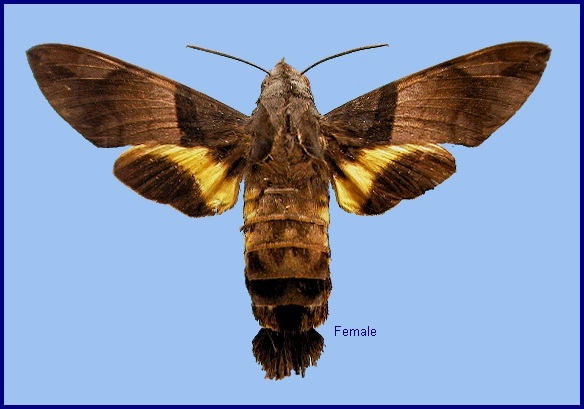
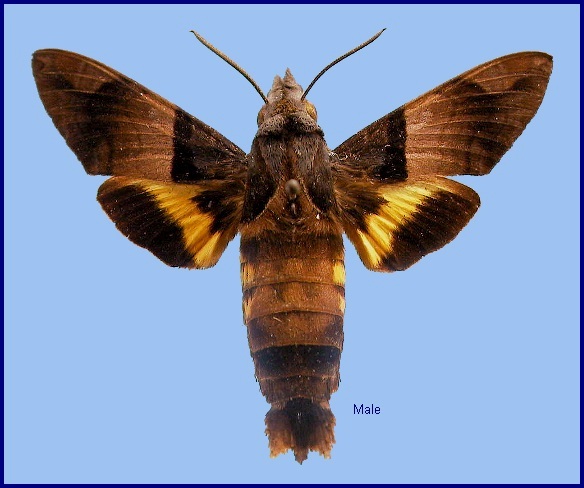
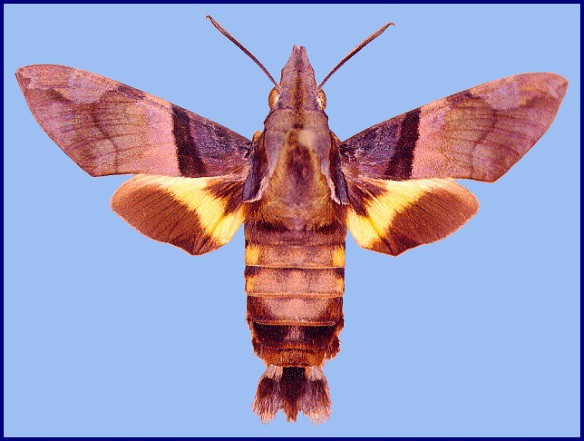
Sphinx passalus Drury, 1773, Illust. nat. Hist. exot. Insects 2: index [91]. Type locality: China.
Synonym. Sphinx passalus Drury, 1773.
Synonym. Sphinx pandora Fabricius, 1793.
Synonym. Macroglossum rhebus Moore, 1858.
Synonym. Rhamphoschisma rectifascia R. Felder, 1874.
Synonym. Macroglossa sturnus Boisduval, 1875.
[Further details on this species in Japan, as well as photos of many stages, can be found on Digital Moths of Japan.]
Wingspan: 52--62mm. Forewing upperside basal area as far as first antemedian line darker than head; the space between the slightly curved first and straight second antemedian lines black, the lines themselves vestigial; median area russet, palest adjacent to the antemedian band; first discal line thin, vestigial; second heavier, both curved costad anteriorly, with the space between brown anteriorly, sometimes containing the trace of a chevron behind vein Rs3; a blackish 'cloud' extending from vein M1 towards the distal margin near the angle. Both wings undersides cinnamon-rufous. Hindwing upperside yellow band concave distally, the black border being evenly convex. Hindwing underside anal area yellow.
Head and thorax uppersides mouse-grey, with a dark mesial stripe. Mesothoracic tegula with posterior half dark slate-colour; edge of tegula and metanotum russet, appearing greenish in certain lights. Abdomen with yellow lateral spot of second segment small, those of the third and fourth segments larger, with conspicuous black spots at their proximal sides; sixth tergite almost black, seventh with a conspicuous black mesial patch; proximal side-tufts with white tips, those of sixth and seventh segments tipped yellow or tawny. Thorax underside middle and foretarsus clayish buff; thorax laterally and legs chestnut-hazel. Abdomen underside chestnut-hazel.
In the male genitalia, uncus convex apically, obtuse. Gnathos round apically. Valve with stridulatory scales. Harpe slender, gradually and slightly curving upwards, obtuse, weakly denticulate at the tip. Phallus with process relatively short, obtuse, multidentate apically, the basal teeth long.
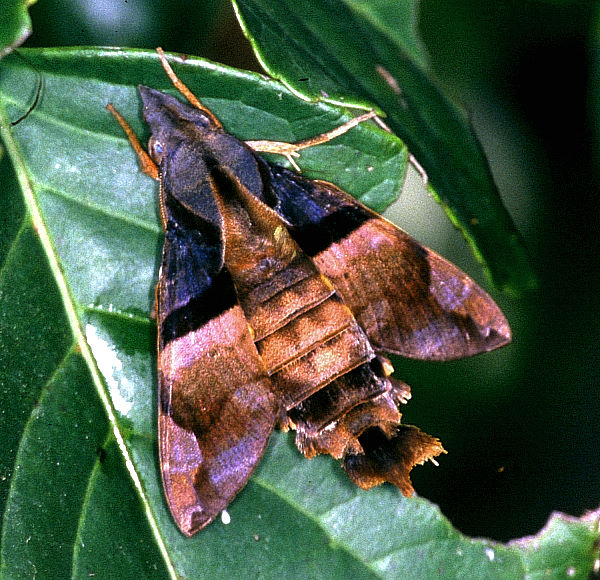
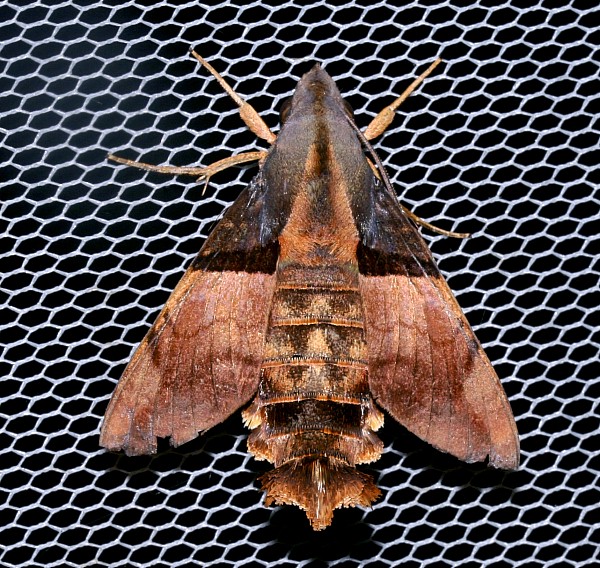
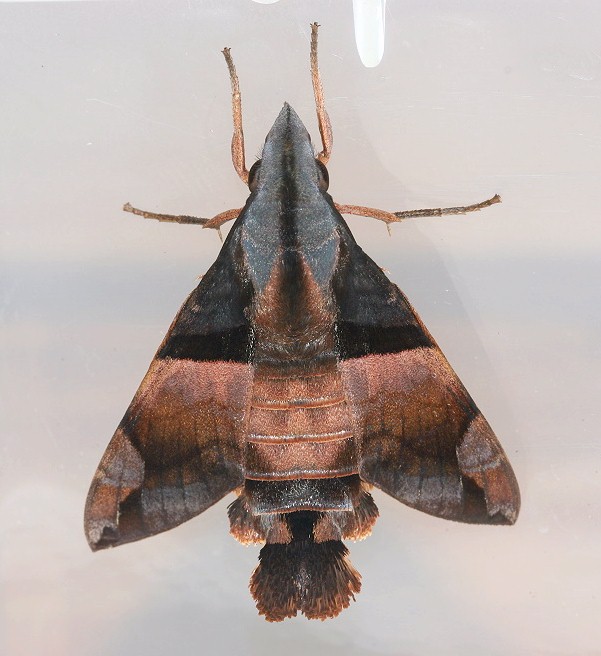
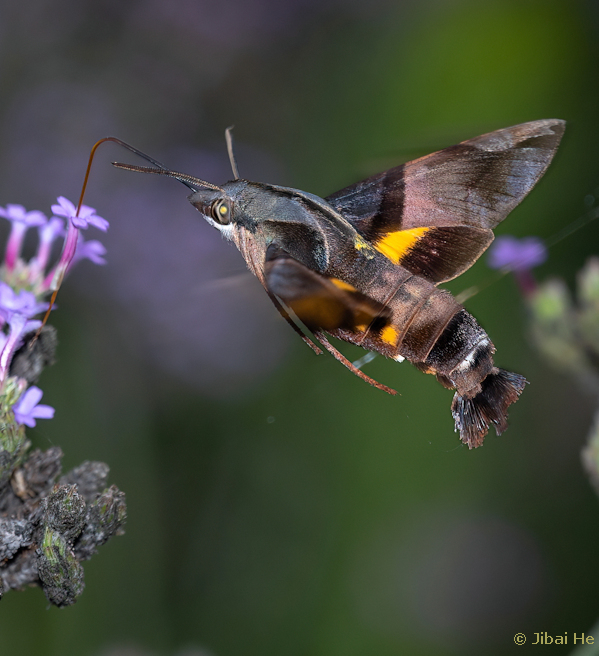
Attracted to the flowers of Duranta erecta and Lantana camara at dawn and dusk.
China: iii-v (Hong Kong); v-viii (Guangdong); vi (Jiangxi); 6-13.vii (Hong Kong); 30-31.vii (Zhejiang); viii-ix (Hong Kong); x (Guangdong). Taiwan: vi (Taipei). South Korea: 15.ix (South Cholla Province). Japan: vi-viii (Ryukyu Archipelago); ix-xi (Ryukyu Archipelago).
OVUM:
LARVA: In the final instar head dull green to yellow. Body pale yellow with faint blue encircling lines. There is a dark blue, black-spotted dorsal stripe, which is edged with pale blue from segments 4 to 14; a dorso-lateral line of the same colour is also present. Below the spiracles runs a line of blue spots ring with black. This starts with two large black spots on segment 3 and ends with two similar spots on 14. The horn is pale blue, encircled by a black ring at its base. True legs black; claspers spotted with black (W. H. Campbell, in Bell & Scott, 1937).
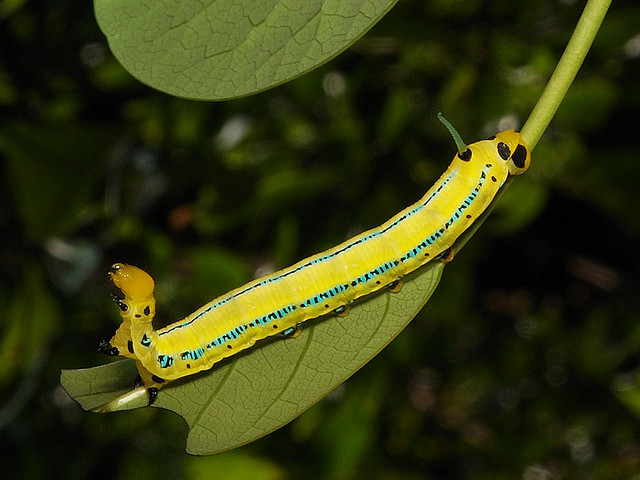
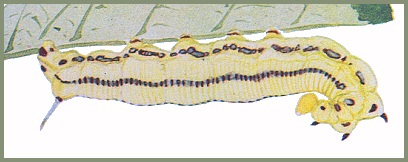
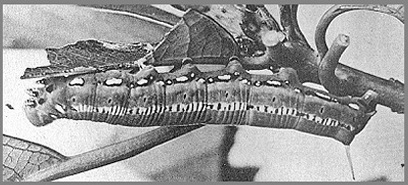
PUPA:
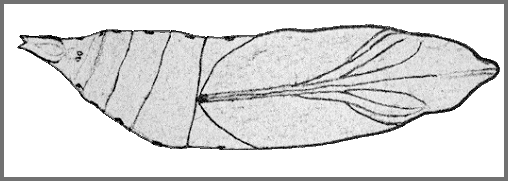
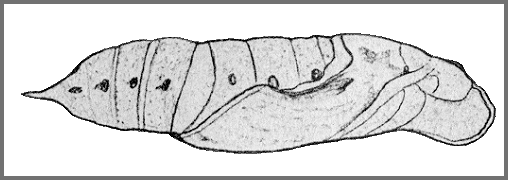
Larval hostplants. Daphniphyllum calycinum (Daphniphyllaceae) in Hong Kong, Daphniphyllum longiracemosum [syn. Daphniphyllum himalayense var. longiracemosum] in Yunnan, Photinia glabra (Rosaceae) in Japan, and Daphniphyllum glaucescens and Causonis japonica [syn. Cayratia japonica] on Taiwan, although the latter record may be an error. In India it has been found on Photinia lindleyana (Bell & Scott, 1937).
Braconidae: Meteorus stellatus Fujie, Shimizu & Maeto, 2021.
China: Shanghai; Zhejiang (Nanji Islands National Nature Reserve, Wenzhou; Anminguan); Sichuan (Lixi); Guizhou (Jiucai Ling); Hunan (Shangzhi, 1440m); Jiangxi (Le'an); Guangdong (??Wa-sha-tai; Guangzhou; Longtou Shan; Luofu Shan; Fengwan; ??Su Liu Kun; Dongguan; Shenzhen); Hong Kong.
Taiwan: Taipei (Hushan); Taipei Hsien (Fushan; Yangmingshan).
South Korea: South Cholla Province (Heuksan-do).
Japan: Ryukyu Archipelago (Okinawa (Manabe et al., 2014); Iriomote-jima (Kishida & Shirakawa, 1988); Ishigaki-jima; Tokuno-jima; Amamio-jima).
Sri Lanka, India, Thailand, southeastern China, Taiwan, southern South Korea (Oh et al., 2023), southern Japan, Indonesia (Sumatra, Java), the Philippines.
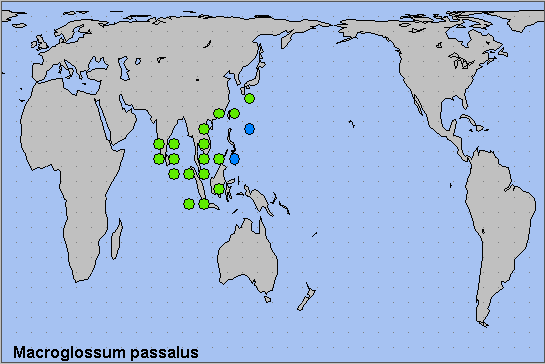
 Return to Sphingidae of the Eastern Palaearctic species list
Return to Sphingidae of the Eastern Palaearctic species list